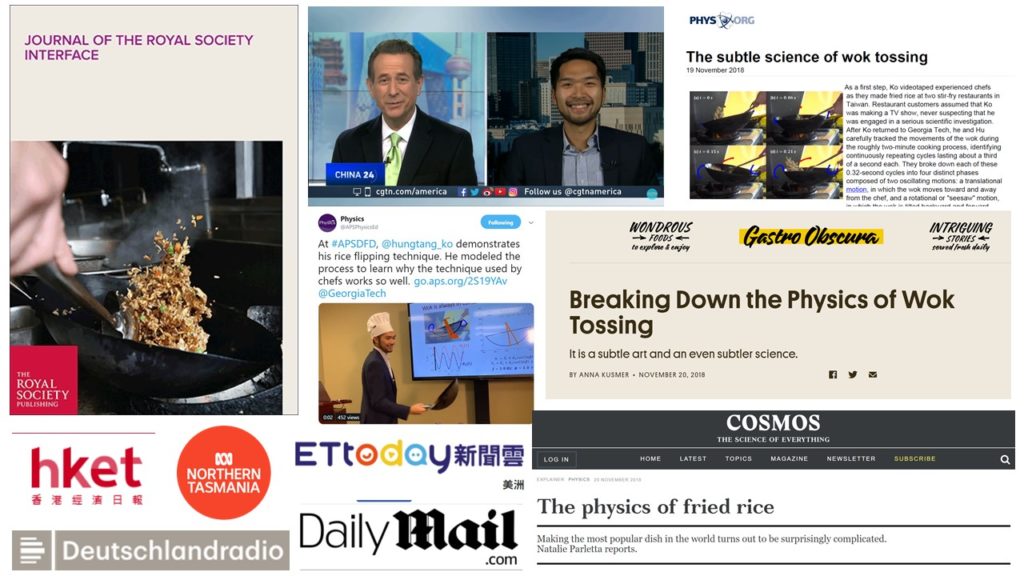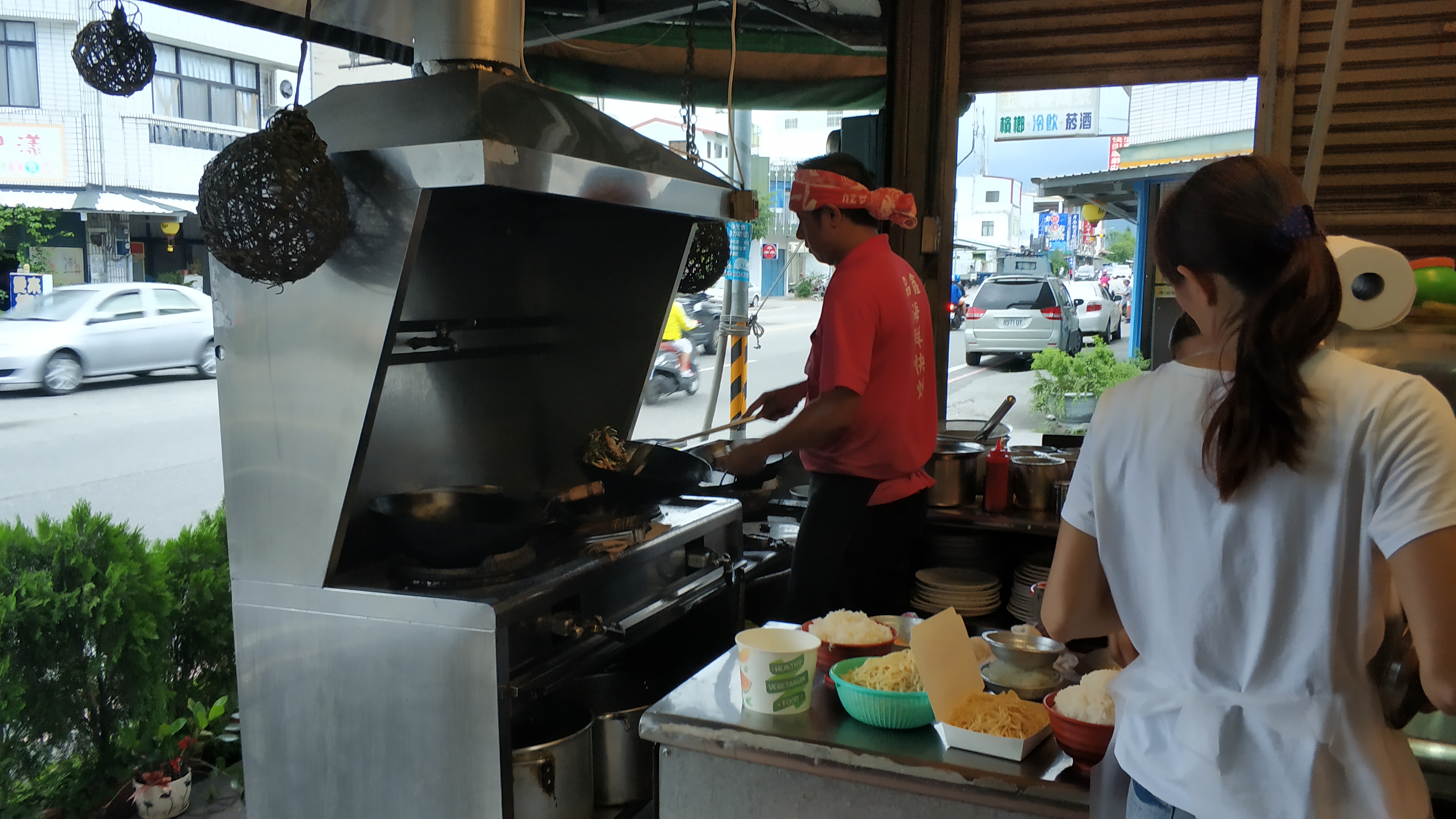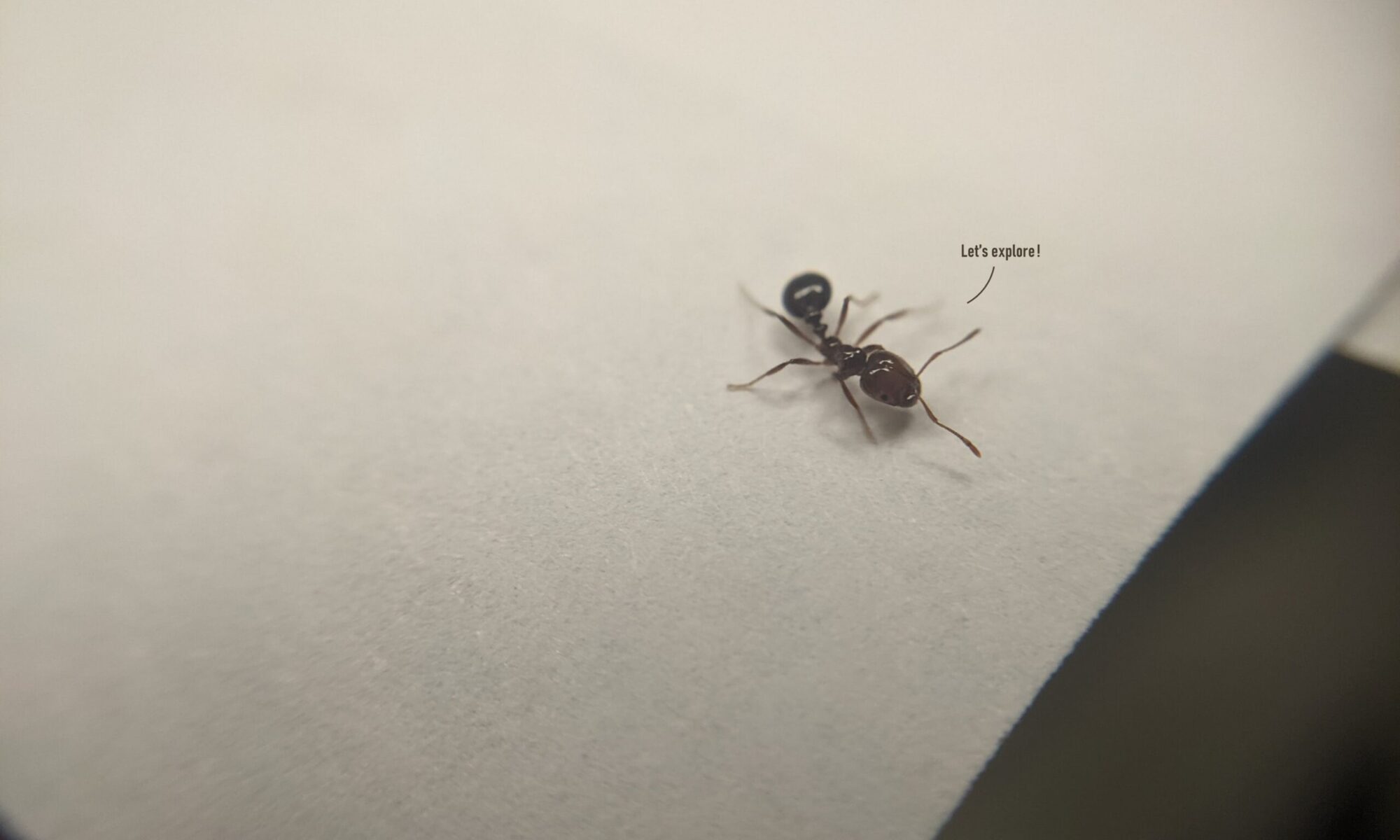
How it started
I started the project while doing my gap year as an English teacher in the aboriginal area of Taitung County, Taiwan, in 2018. My professor David Hu and I happened to have the same thought: most of the cooking science at the time only focused on western cuisine, what about eastern cuisine? With the mission of discovering the science behind the mysterious wok-tossing technique, I visited this local restaurant which specializes in stir-frying.
Stir-fry is a difficult cooking technique that usually requires a few months of training. The chef we recorded went to cooking school in order to be able to toss hundreds of dishes every day, all by himself. When I approached him about the project, he was confused and surprised. I couldn’t promise him anything because I didn’t know what will come out of the recordings. He still gave me permission to record. The most amazing of all, instead of charging me additional for the inconvenience I caused, he even insisted that I didn’t pay him for the fried rice he cooked for the recording and to feed me. (Everyone please visit Taiwan and make him rich!)

Impact of the Fried Rice Project
Other than pure scientific curiosity, meeting with the chef made me really want to improve their lives. From various reports in the literature, shoulder injury is common among chefs. As we have found, wok tossing requires the chef to move the wok as heavy as 2 kg or more at the frequency of 3 Hz. That’s 0.3 seconds per cycle. I hope our knowledge of physics behind wok tossing can help to reduce the load from the chefs.
One way to do it is by designing the assistive robotic device. This is a booming technology which interfaces the human body with robotic motors to help human accomplishing tasks with less effort. Our project can provide physical knowledge that is required to design such systems for wok tossing.
If more food needed to be processed at the same time, chefs can also turn to wok tossing robots to avoid injury. We have a prototype in our lab that can mimic the wok motion with motors.
Wok tossing as a mixing method has potential beyond cooking. Being able to mix materials like fried rice in a rapid and energy-saving manner is essential for the success of pharmaceutical companies and biomass plants. Think about the old-fashion dryer you may have, wouldn’t it will be more efficient if it can toss your laundry like fried rice, isn’t it?

What we found from the video analysis
Frying rice is an extremely dynamic process. The wok has to be moved quickly at around 3 Hz for the rice grains to be tossed and mix fully. From video analysis, found a key feature of wok-tossing: the wok is always touching the stove rim throughout the motion. This is against the intuition that the wok should be lifted off from the wok to toss. The contact with the rim makes sense since it may relieve the chef’s burden by providing vertical support for the heavy wok(~2 kg with food).
Mathematical Model
We used our knowledge gained from the video analysis to build a mathematical model for explaining the wok motion. It appears that the wok motion can be best described by a two-link pendulum with its one end attaching to the wok rim and the other attaching to the bottom of the wok. The model opens the opportunity to study numerically the scenario where the model parameters vary. We focus on studying the focus of two parameters: frequency and the phase difference that describe the lagging between the translational and rotational motion.

Frequency Effect
We discovered that the frequency is associated with the time scale of the rice grain falling. This explains why when we asked the chef to cook 3 servings of rice in one go, the frequency they used didn’t change: The time it takes for an object to fall from a fixed distance is a constant regardless of the object weight!
As the frequency increases, the cycle period of the wok motion decreases. Up to one point, although the higher frequency can allow the rice grains to jump a little bit higher and farther, they will fall onto the wok when other rice grains are about to take off because the next cycle has already started. This will end up having a negative effect on the jumping performances of the rice grains. Additionally, the power the chef has to input to the system scale to the third power of the frequency. The metabolic cost increases drastically as the frequency increases.
Phase Difference Effect
Phase difference is what is used in the model to describe the lagging between the translational motion and the rotational motion. Think about the motion of the wok as the addition of the rotational motion like the seesaw, and the periodic translational motion that moves the center of rotation along a straight line segment back and forth. If the two signals are perfectly in phase, the points on the wok would move along a straight line.
But this is not what we observed in our recordings. In reality, points on the wok move along circular trajectories. This helps the rice grains to be moved from the center to the edges of the wok and jump from there. The circular trajectories relied on the choice of phase difference.
We used our model to investigate how different phase difference would affect the jumping height and distance of the rice grains. The result was astonishing: the phase difference used by the chefs is the optimal choice! Through many years of learning, the chefs have mastered at tossing wok to allow the rice grains to move around the most by choosing the optimal phase difference.
Media coverage
It has also attracted much attention from the media. It has already been covered by 10+ websites/magazines, both in English and Mandarin. Readers that are interested are welcomed to go to the links below for selected coverage:
CGTN TV(TV)
